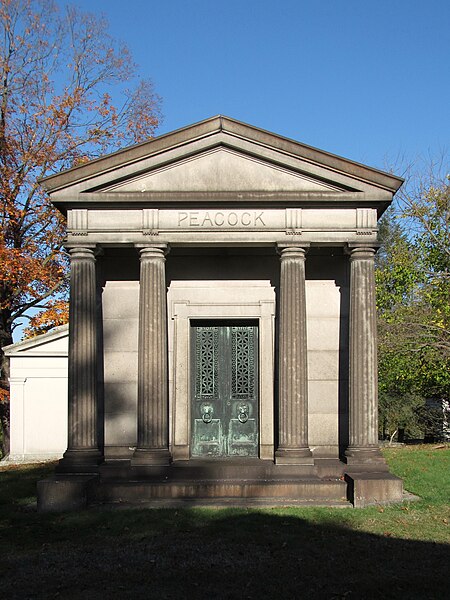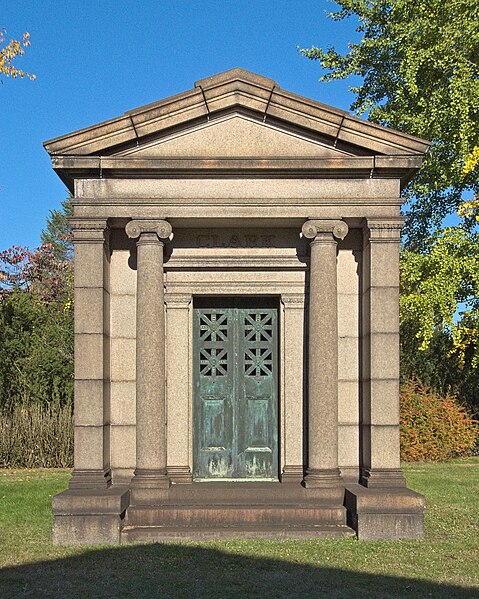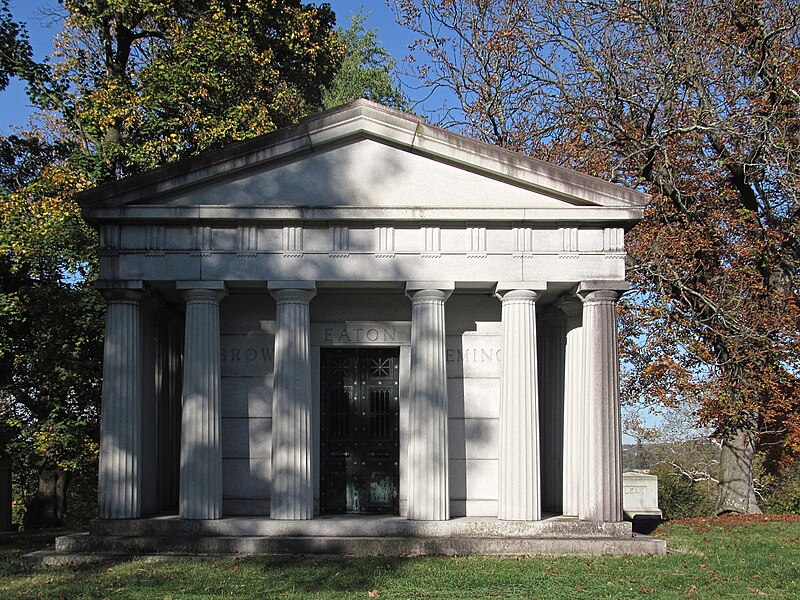

Another honey-colored mausoleum, this one notable for its fine bronze doors with lion’s-head door pulls.


You can also see our earlier pictures of the Peacock mausoleum.


Another honey-colored mausoleum, this one notable for its fine bronze doors with lion’s-head door pulls.


You can also see our earlier pictures of the Peacock mausoleum.

A strikingly dignified Art Deco mausoleum that adapts the setbacks of Deco skyscrapers to the classical formality of a cemetery environment.
We have more pictures of the Bald mausoleum in an earlier article.

The dark honey-colored stone of this Ionic mausoleum makes it different from the majority of gleaming white classical mausoleums in the cemetery, and more like a natural part of the landscape. Otherwise there is nothing extraordinary about it: it is a gentleman’s mausoleum, and a gentleman would not dress ostentatiously.

We also have some summer pictures of the Clark mausoleum.

It took a bit of money to raise an authentic peripteral Doric temple like this. (“Peripteral” means having columns all the way around.)

One sooty corner of the mausoleum also memorializes Pittsburgh’s industrial past.
More pictures are here.